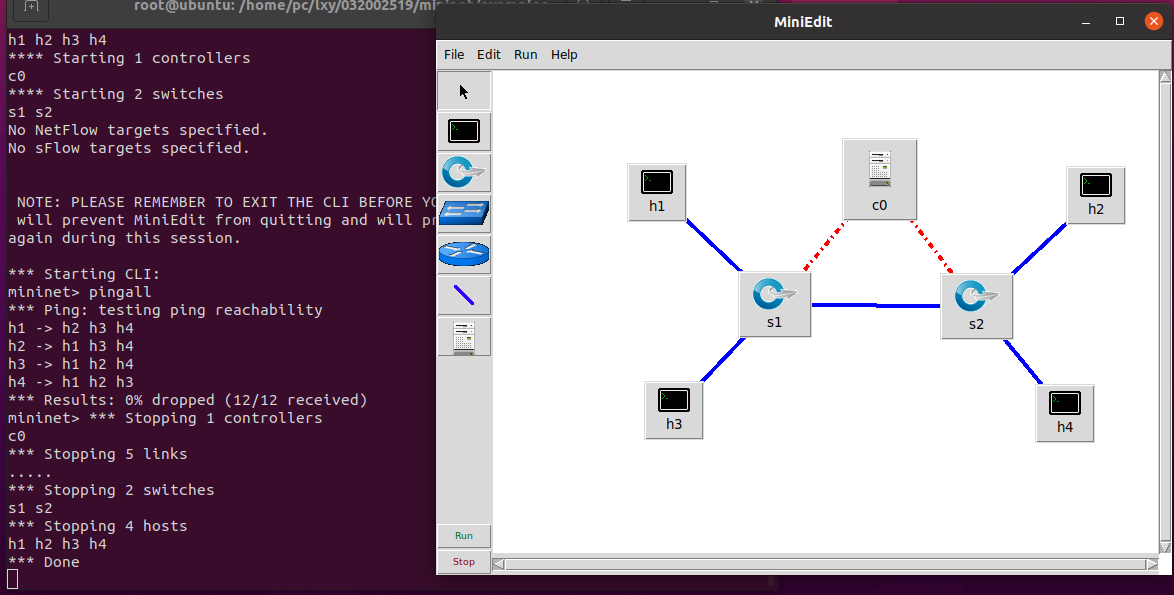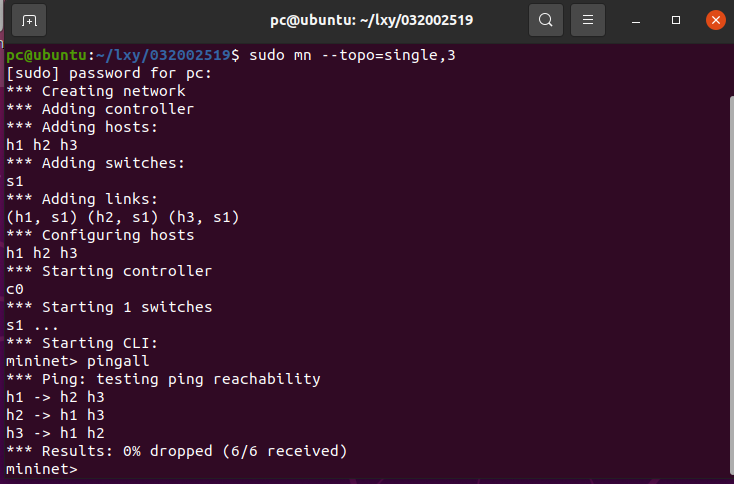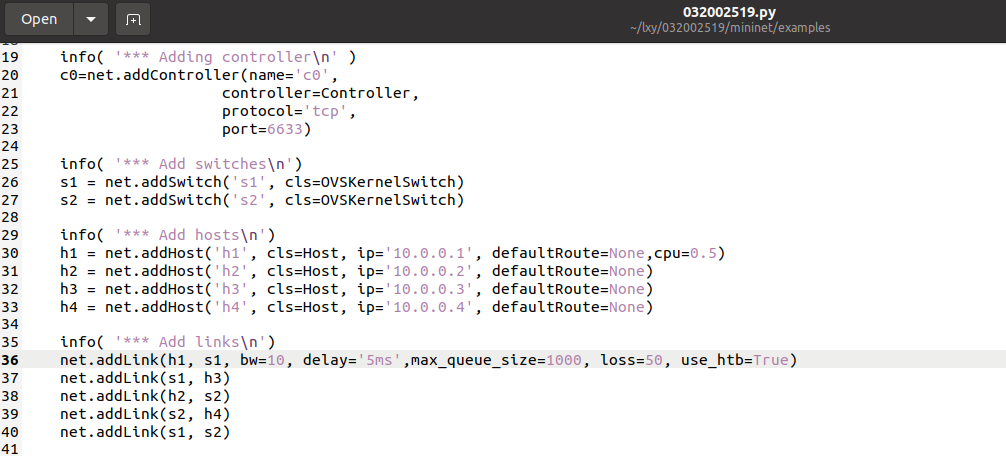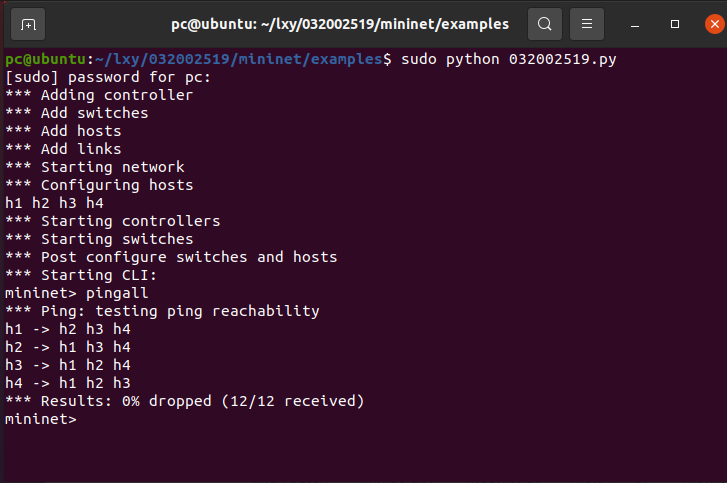实验1:SDN拓扑实践
实验要求:
(一)基本要求
-
Mininet运行结果截图

-
使用Mininet的命令行生成如下拓扑:
(a)3台交换机,每个交换机连接1台主机,3台交换机连接成一条线。

(b)3台主机,每个主机都连接到同1台交换机上。

-
在2 (b)的基础上,在Mininet交互界面上新增1台主机并且连接到交换机上,再测试新拓扑的连通性。

-
编辑(一)中第1步保存的Python脚本,添加如下网络性能限制,生成拓扑:
a) h1的cpu最高不超过50%;
b) h1和s1之间的链路带宽为10,延迟为5ms,最大队列大小为1000,损耗率50。


(二)进阶要求
代码:
#!/usr/bin/python
#创建网络拓扑
"""Custom topology example
Adding the 'topos' dict with a key/value pair to generate our newly defined
topology enables one to pass in '--topo=mytopo' from the command line.
"""
from mininet.topo import Topo
from mininet.net import Mininet
from mininet.node import RemoteController,CPULimitedHost
from mininet.link import TCLink
from mininet.util import dumpNodeConnections
class MyTopo( Topo ):
"Simple topology example."
def __init__( self ):
"Create custom topo."
# Initialize topology
Topo.__init__( self )
L1 = 2
L2 = L1 * 2
L3 = L2 * 2
c = []
a = []
e = []
# add core ovs
for i in range( L1 ):
sw = self.addSwitch( 's{}'.format( i + 1 ) )
c.append( sw )
# add aggregation ovs
for i in range( L2 ):
sw = self.addSwitch( 's{}'.format( L1 + i + 1 ) )
a.append( sw )
# add edge ovs
for i in range( L3 ):
sw = self.addSwitch( 's{}'.format( L1 + L2 + i + 1 ) )
e.append( sw )
# add links between core and aggregation ovs
for i in range( L1 ):
sw1 = c[i]
for sw2 in a:
self.addLink( sw2, sw1 )
# add links between aggregation and edge ovs
for i in range( L2 ):
sw1 = a[i]
for j in range(L2):
sw2 = e[int(i/2)*L2+j]
self.addLink( sw2, sw1 )
#add hosts and its links with edge ovs
count = 1
for sw1 in e:
for i in range(2):
host = self.addHost( 'h{}'.format( count ) )
self.addLink( sw1, host )
count += 1
topos = { 'mytopo': ( lambda: MyTopo() ) }
运行结果:

(三)个人总结
实验过程遇到的困难及解决:
在实验过程中刚开始遇到了打开miniedit错误,后面通过询问舍友在群里得到解决方案;后面就是遇到py文件只可读,但是在转换为管理员时密码出现错误,后面经过csdn发现原来转为管理员的密码跟原有密码不一样,可以自行进行修改后就解决问题了。
感想:
践行先自行学习后实践会让实验进行的更加顺利且出现问题时知道缘由;而在进行实验的过程当中也应该细心,戒骄戒躁;遇到不懂的问题时一定要先去自己查,在这个过程会意外的学到更多的知识,如果最后实在找不到不要害羞找同学,你踩的都是他们踩过的坑。




 浙公网安备 33010602011771号
浙公网安备 33010602011771号